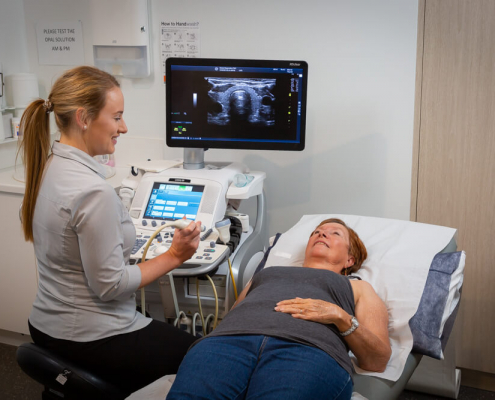Ultrasound Elastography (also known as ARFI) is quickly becoming the new gold standard for fast and accurate diagnosis and monitoring of chronic liver disease. It is used to stage the severity of liver disease by measuring the ‘hardness’ of the liver tissue and fibres, which can be an indication of liver fibrosis. This is determined by measuring the time a vibration wave, or shear wave, takes to travel to a particular depth inside the liver.
Accurate diagnosis and staging of liver fibrosis is essential for the prognosis and management of chronic liver disease. ARFI provides a non-invasive alternative to painful liver biopsy.
Instead of manual compression, ARFI technology allows the tissue to be compressed by an acoustic ultrasound beam. One advantage of this approach is that the acoustic beam is focused at the region of interest. This maximizes the local displacement of tissue compared to at the skin surface with uncontrollable stress being applied in deeper tissues.
Using ARFI to assess liver disease
Liver function tests and transient ARFI are non-invasive, sensitive and accurate tools for the assessment of liver fibrosis and for the discrimination between cirrhotic and non-cirrhotic liver.
ARFI imaging offers the possibility of performing a quantitative measurement of the elasticity of the hepatic parenchyma during conventional ultrasound evaluations, without requiring additional transducers or other equipment.
Ultrasound Elastography (ARFI) is now replacing liver biopsy as the gold standard in detection and monitoring liver fibrosis, cirrhosis and hepatitis associated issues.
Before the scan
The patient will be required to fast for 4 hours prior to their appointment.
During the scan
ARFI is straight forward and painless. The patient will be asked to lay on their back and the test typically takes about 10 minutes to perform.


